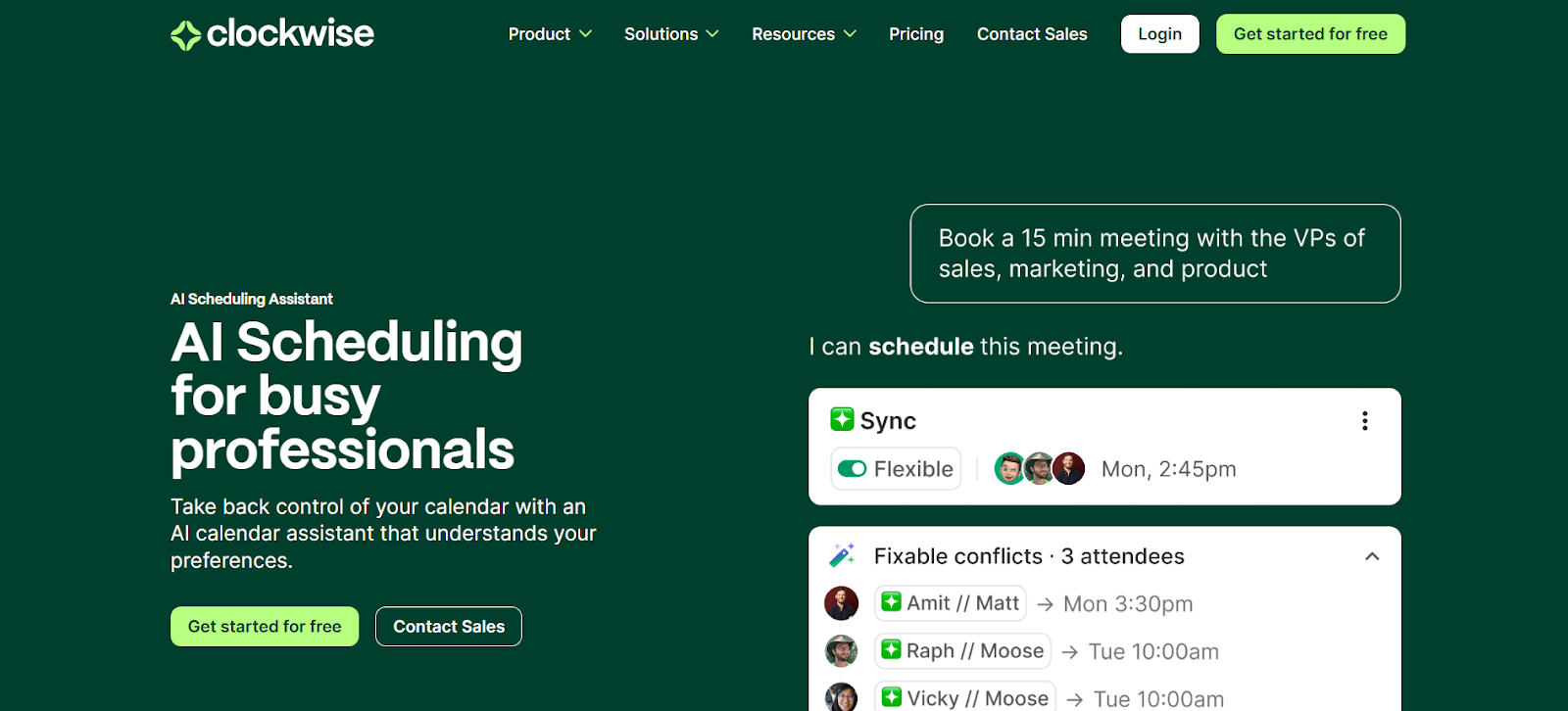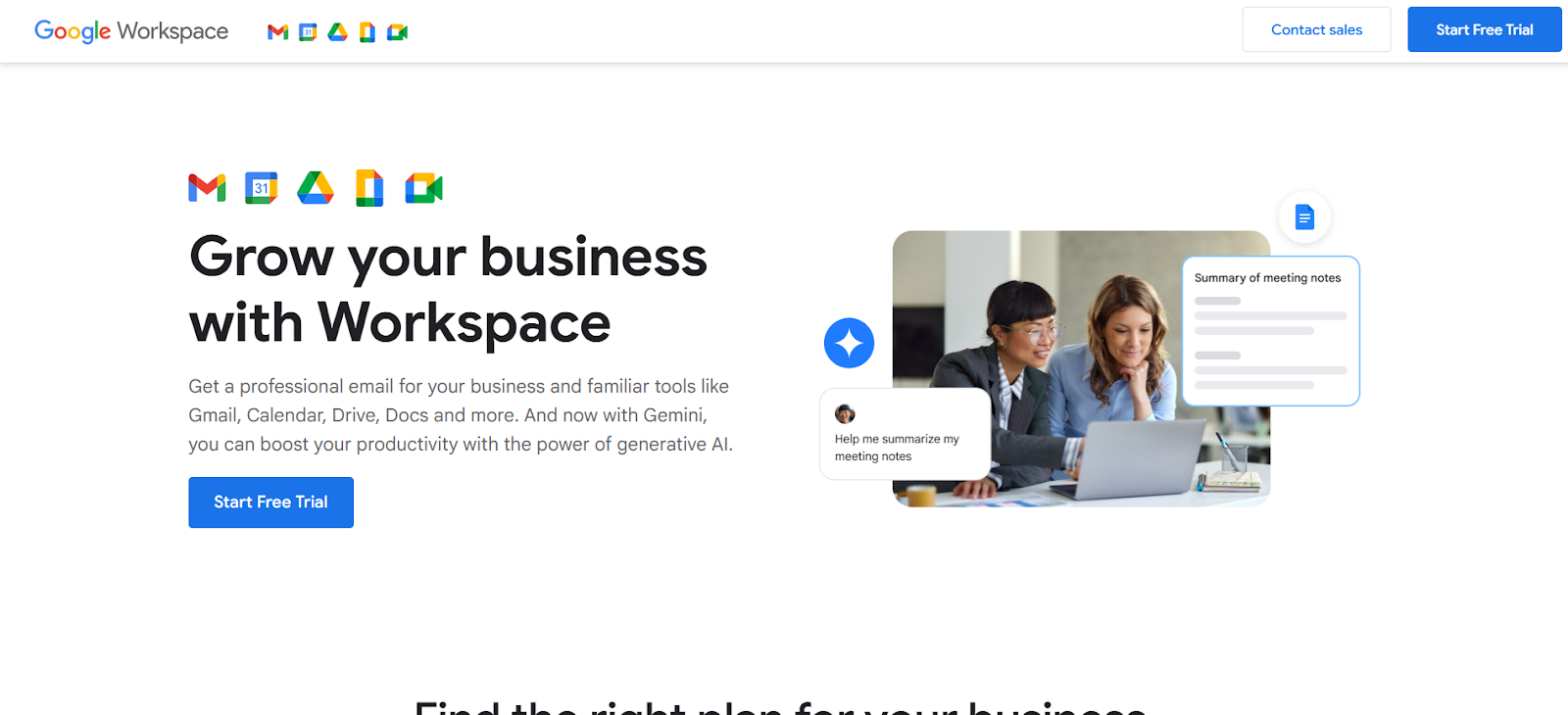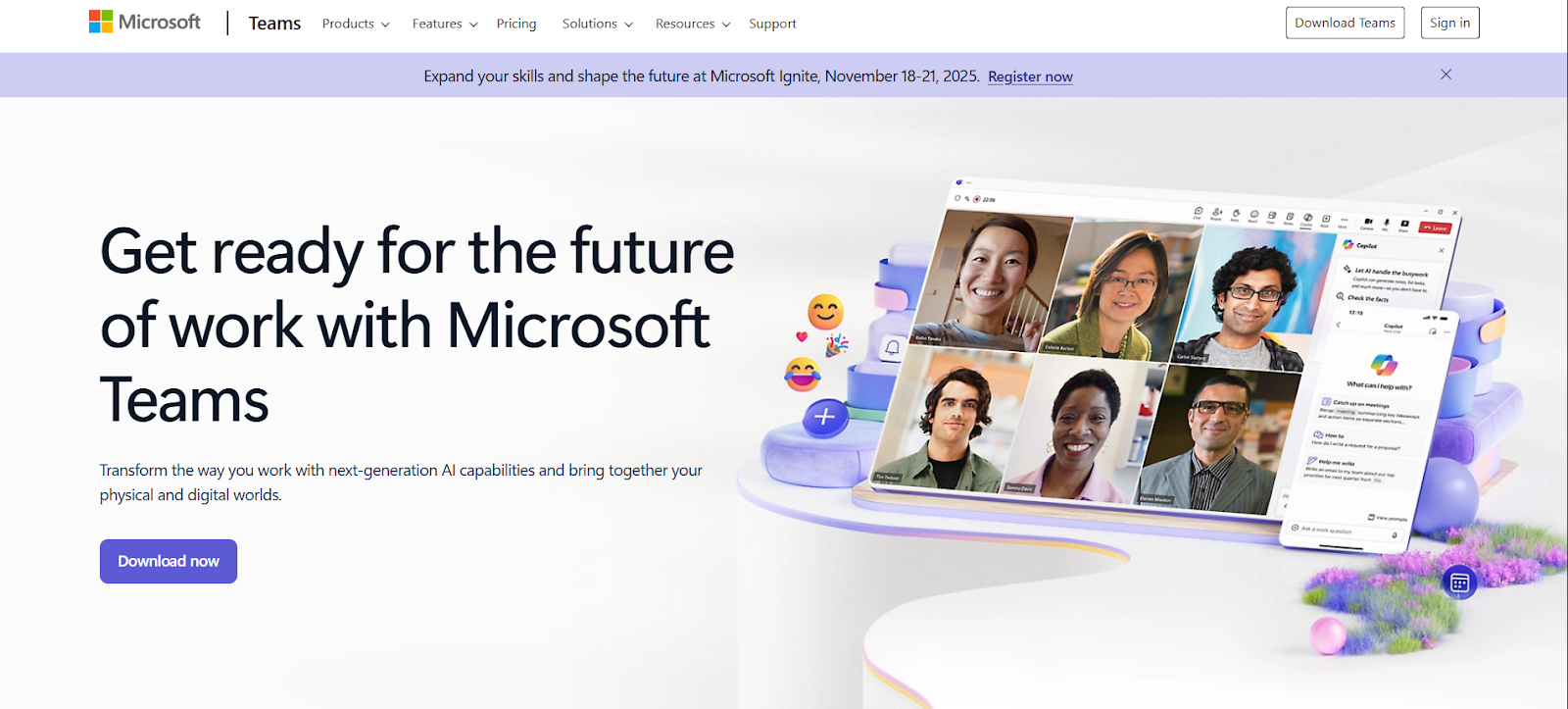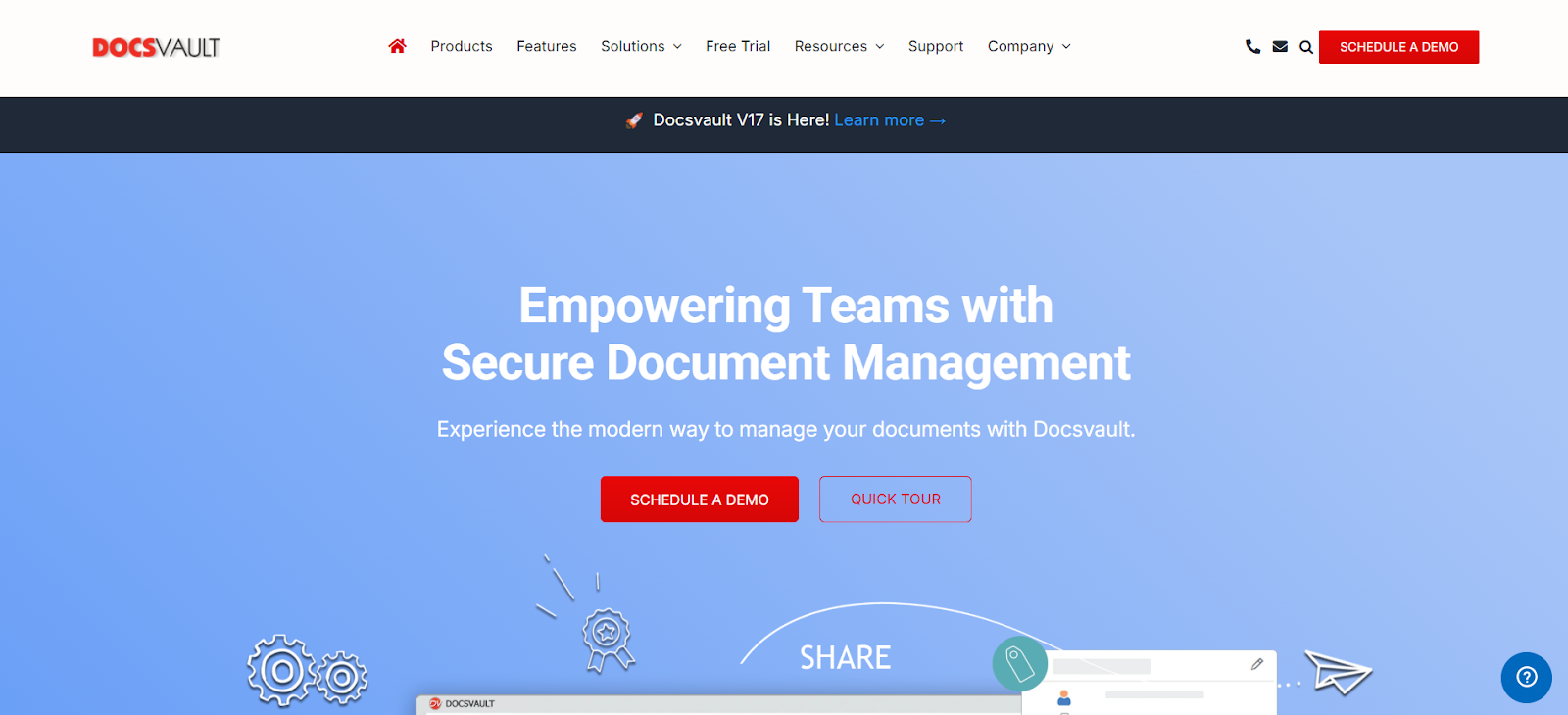Did you know that businesses lose up to 20–30% of revenue every year due to inefficient processes? Poor workflows waste time, drain resources, and frustrate employees. When tasks pile up or bottlenecks slow progress, your team feels the pressure and your business pays the price.
Workflow inefficiency is not only about wasted hours. It leads to higher operating costs, missed deadlines, and reduced customer satisfaction. Over time, these issues compound, making it harder to stay competitive in fast-moving markets.
That’s where workflow efficiency analysis comes in. By examining how tasks move through your business, you can spot inefficiencies, identify opportunities for improvement, and create processes that actually work for your team. The result? A leaner, more productive business that adapts quickly to change.
This blog will explore what workflow efficiency analysis is, why it matters, and how to use it to boost performance. You’ll also learn about tools, best practices, and common pitfalls, so you can start optimizing the way your team works today.
Key Takeaways
- Workflow efficiency analysis helps uncover time and resource wastage, allowing businesses to streamline processes and improve overall productivity.
- Using methods like process-based or time-based analysis provides tailored insights, helping businesses tackle inefficiencies from various perspectives for comprehensive optimization.
- Tools like Clockwise and automation platforms help streamline tasks, manage time effectively, and eliminate repetitive work, increasing overall workflow efficiency.
- Regular monitoring and adjustments, alongside employee feedback, ensure workflows remain efficient and adaptable to business growth and market changes.
What Is Workflow Efficiency Analysis?
Workflow efficiency analysis is the process of reviewing how tasks and activities move through your business. It focuses on identifying which steps add value and which create delays, errors, or wasted effort. By mapping and measuring these workflows, you gain a clearer picture of where time, resources, and energy are being lost.
The main purpose of workflow efficiency analysis is to uncover hidden inefficiencies. You can evaluate cycle times, error rates, and throughput to understand performance. This allows you to see how well your processes support business goals and where improvements are needed.
For example, according to Asana’s 2024 State of Work Innovation Report, individual contributors now spend an average of 3.7 hours per week in unproductive meetings. That number more than doubled from 2019, significantly eating into the time you could spend on deep, value-adding work.
At its core, workflow efficiency analysis helps you achieve three key outcomes:
- Clarity: Understanding how work is actually done, not just how it’s supposed to be done.
- Speed: Reducing delays by removing unnecessary steps or reordering tasks.
- Optimization: Using resources more effectively to support both employees and business growth.
Next, let’s explore why workflow efficiency analysis is so crucial for modern businesses.
Why Workflow Efficiency Analysis Is Crucial for Businesses?
When workflows are inefficient, your business loses time, money, opportunities, and employee trust. Poorly designed processes create challenges, waste resources, and frustrate teams. A workflow efficiency analysis helps you uncover these issues before they spiral into bigger problems, giving your business a competitive edge.
1. Addressing Operational Challenges
Every business faces challenges, whether it’s an approval process that takes days instead of hours or redundant tasks that slow projects. By conducting a workflow efficiency analysis, you can map these problem areas and replace them with streamlined steps that keep work moving.
2. Making Everyday Work More Productive
Time lost on repetitive tasks or chasing approvals drains energy and motivation. A structured workflow analysis highlights tasks that can be automated or simplified, freeing employees to focus on high-value work.
This reduces stress, improves satisfaction, and ultimately makes teams more engaged. Productive employees are also more innovative, giving your business room to grow.
3. Cutting Costs and Driving Better Returns
Inefficiencies aren’t just frustrating. They're expensive. A proper efficiency analysis identifies exactly where waste occurs, from duplicate data entry to underused technology. Cutting these drains reduces overhead and directly increases profitability.
4. Adaptation to Change
Markets evolve quickly. If your workflows are rigid, your business risks falling behind. A workflow efficiency analysis helps you build agility by ensuring processes are flexible enough to handle change. Whether it’s adopting new technology, meeting customer demands, or responding to regulatory shifts, efficient workflows allow you to adapt without disrupting productivity.
The next step is to understand the different types of workflow analysis you can apply to achieve these outcomes.
Types of Workflow Analysis
No single method captures every workflow challenge. Each analysis type shines a light on different aspects of efficiency. Depending on your business goals, you may choose one approach or combine several to build a complete picture.
1. Process-Based Analysis
Map how work actually travels, not how the SOP claims it should. Follow a few live items end to end, note every handoff and decision, and mark where work loops back or stalls for clarification. Patterns emerge quickly: duplicate reviews, steps with no clear owner, approvals stacked for low-risk items.
For Example, an HR onboarding process with multiple approvals that delay new hires’ start dates.
2. Time-Based Analysis
Here, the focus is on turnaround times, delays, and idle periods. By analyzing how long each step takes, you uncover where processes stall. A few queues dominate total delay; variability, not average time, creates missed commitments. For example, a sales quote approval that takes five days due to waiting on management sign-off.
Metrics to instrument. Touch time, wait time, queue age, percentile cycle time (P50/P85/P95), flow efficiency = touch ÷ total.
3. Bottleneck-Focused Analysis
One constraint sets the pace for the entire system. Find it by locating the longest persistent queue, the role with the highest utilization plus rising WIP, or the team forced into constant context switching.
Protect that constraint from interruptions, move noncritical tasks away from it, and cap upstream intake to match true capacity. Pair this with a simple visual WIP limit and you’ll see steadier throughput, lower variability, and fewer fire drills. Improvements elsewhere don’t move the needle until the constraint is stabilized.
4. Value-Added Analysis
Not every task creates value for the customer or business. This method separates value-adding steps from non-value-adding activities like excessive reporting. For example, in software development, coding and testing add value, but redundant manual status updates do not.
Typical removals include duplicate status reporting, manual re-entry between tools, and cosmetic checks.
5. Resource-Based Analysis
This analysis reviews the allocation of people, technology, and financial resources. It reveals where resources are stretched too thin or underused. For instance, a marketing team that uses five disconnected tools for campaign tracking wastes budget and duplicates work. Rebundle tasks to match skills; retire orphaned tools; centralize shared services that spike and stall.
6. Compliance-Driven Analysis
Some industries require workflows to align with regulatory or audit requirements. Compliance-driven analysis ensures every step meets standards. For example, healthcare workflows are checked against HIPAA requirements for patient data handling. This minimizes legal and financial risk while maintaining trust.
7. Hybrid Approaches
Many organizations blend methods to capture the full picture. For example, combining time-based and bottleneck analysis ensures both delays and choke points are addressed. For example, a financial services firm analyzes process flow for compliance while also reducing turnaround times for loan approvals.
Choosing the right analysis type depends on your goals: speed, compliance, cost savings, or customer satisfaction. Once you’ve selected your approach, the next step is learning how to conduct workflow efficiency analysis effectively.
For teams struggling with overbooked schedules, Clockwise’s AI-powered scheduling can dynamically adjust meeting times and block focus time, ensuring your team has uninterrupted time to work on high-priority tasks.
A Step-by-Step Guide to Workflow Efficiency Analysis

Improving workflows requires more than guesswork. A structured approach ensures you identify the right problems, design targeted fixes, and measure impact. Follow these seven steps to conduct an effective workflow efficiency analysis.
Step 1: Identifying the Workflow to Analyze
The first step in conducting an effective workflow efficiency analysis is identifying which workflows to analyze. Not all workflows need immediate attention, so prioritizing the ones that have the most significant impact on your organization's productivity and performance is crucial.
Key Considerations:
- Evaluate Current Pain Points: Look for areas within your business that are known to be inefficient. Are there processes that your team finds overly complicated or tedious?
- Focus on High-Impact Areas: Prioritize workflows that directly affect key business functions like customer service, sales, or product development.
- Consider Time-Sensitive Tasks: Workflows tied to deadlines, such as invoice approvals or client onboarding, should be evaluated first.
- Examine Frequency and Volume: High-frequency workflows or those that deal with large volumes of tasks or data are prime candidates for analysis.
Once you've identified the workflows to focus on, gather feedback from stakeholders who regularly interact with them to ensure the analysis addresses real challenges.
Step 2: Mapping the Current Workflow
Mapping the current workflow is essential to visually understand how tasks and activities flow within a given process. This step allows you to track where inefficiencies occur, identify bottlenecks, and visualize task dependencies.
Tools and Techniques:
- Flowcharts: Create simple flowcharts to map out the sequence of tasks and decisions in the workflow.
- Swimlane Diagrams: Use swimlane diagrams to show the roles or departments responsible for each task.
- Process Mapping Software: Use digital mapping tools to build clear, shareable workflow diagrams.
A clear visual representation helps you pinpoint areas where tasks overlap, cause delays, or where resources may not be allocated efficiently.
Step 3: Gathering Data and Insights
The next step is to collect both quantitative and qualitative data on the current workflow. This will help identify inefficiencies and provide insights into where improvements can be made.
Data Sources:
- Performance Metrics: Gather data on time spent, cycle times, error rates, and throughput.
- Employee Feedback: Collect insights from those involved in the workflow to understand their frustrations, challenges, and suggestions for improvement.
Define Key Performance Indicators (KPIs):
To measure success, define KPIs such as:
- Cycle Time: How long it takes to complete a workflow.
- Error Rate: The frequency of mistakes or issues within the process.
- Throughput: The volume of work processed within a given time.
This data provides an evidence-based foundation for your analysis and improvement plan.
Step 4: Identifying Areas for Improvement
Now that you have mapped the workflow and gathered data, the next step is to pinpoint specific areas that need optimization. Look for the tasks or steps that are causing delays, redundancies, or inefficiencies.
Areas to Consider:
- Redundant Steps: Identify tasks that don’t add value or could be eliminated.
- Bottlenecks: Look for stages in the process where work piles up or causes delays, often due to resource constraints or inefficient task handling.
- Outdated Technology or Tools: Technology that no longer serves its purpose or hinders efficiency should be replaced or upgraded.
- Poor Communication or Coordination: If tasks require excessive back-and-forth between teams or departments, streamline communication methods.
Focusing on these key areas will allow you to tackle the most impactful issues.
Step 5: Proposing Improvements
Based on the insights gathered, propose improvements to optimize the workflow. These could involve task reordering, process automation, or reallocating resources to ensure more effective use of time and effort.
Potential Improvements:
- Automation: Use tools like robotic process automation (RPA) to handle repetitive tasks, such as data entry or approval routing.
- Task Reordering: Change the order of steps to minimize delays or redundant processes.
- Resource Allocation: Redistribute tasks based on team expertise or introduce new technologies to enhance efficiency.
Propose realistic, actionable solutions that can address the most pressing inefficiencies identified in the previous step.
Step 6: Testing and Implementing Changes
Before fully implementing the proposed changes, pilot them in a controlled environment or department. Testing ensures that the new workflow is effective and doesn’t disrupt other parts of the business.
Testing Approaches:
- Pilot Testing: Implement the changes on a small scale and gather feedback to see if improvements are realized without major disruptions.
- Simulation: If applicable, run simulations to assess how the workflow performs under various conditions.
- Feedback Loops: Regularly check in with employees involved in the pilot phase to gather feedback and make adjustments as needed.
Once the changes have been tested and refined, proceed to implement them across the entire organization or the relevant departments.
Step 7: Continuous Monitoring and Refinement
Workflow efficiency analysis is an ongoing process. After implementing the changes, it’s essential to continuously monitor the workflow’s performance to ensure it stays efficient and effective over time.
Ongoing Evaluation:
- Track KPIs: Regularly measure cycle times, error rates, and throughput to ensure continuous improvement.
- Solicit Employee Feedback: Maintain open channels for employee feedback to identify any new pain points.
- Make Adjustments: As your business evolves or external factors change, revisit workflows to refine them further.
This iterative process ensures that workflows remain optimized and adaptable to new challenges or growth. Once you've conducted your workflow efficiency analysis and identified areas for improvement, the next step is to integrate the right tools and technologies that will streamline your processes.
Tools and Technologies That Enhance Workflow Efficiency

The proper tools can facilitate data collection, task automation, collaboration, and more, significantly enhancing workflow efficiency. Below are some of the key tools that enhance workflow efficiency, providing various features designed to optimize business processes.
A. Time and Productivity Tools
These tools help manage and monitor how time is spent, highlighting inefficiencies in task execution and allowing teams to optimize time usage.
1. Clockwise

Over 40,000 organizations rely on Clockwise to optimize their team’s schedules. For remote teams, where meetings often pile up and deep work gets interrupted, Clockwise ensures a balanced schedule by automatically reshuffling meetings and protecting Focus Time.
In fact, 84% of managers using Clockwise report better time efficiency, making it a go-to tool for structured and distraction-free workdays.
How Clockwise Keeps Remote Teams Productive:
- AI-Powered Scheduling: Reschedules meetings dynamically to prevent conflicts and reduce back-to-back calls.
- Focus Time Protection: Blocks dedicated deep work periods, so important tasks aren’t constantly interrupted.
- Scheduling Links: Provides customizable scheduling links that allow others to book meetings directly on your calendar at available slots.
- Slack and Zoom Integration: Updates Slack status, enables Do Not Disturb during meetings, and auto-generates Zoom links.
- Flexible Meetings: Let's teams set meeting flexibility so non-urgent discussions happen at the best times.
- Round Robin Scheduling: Balances meeting requests across team members to avoid schedule overload.
- Cross-Time Zone Coordination: Finds the best meeting times for distributed teams without manual back-and-forth.
- AI-Powered Meeting Rescheduling: Identifies optimal meeting slots based on team availability and focus time goals.
Pricing: Free; Teams $6.75 user/month (annual) or $7.75 (monthly); Business $11.50 user/month (annual only); Enterprise custom.
G2 Rating: 4.7/5 from 74 reviews
2. Toggl

A simple time tracking tool that helps teams monitor how time is spent on various tasks and projects.
- Simple Tracking: Start and stop timers for tracking time on tasks.
- Reporting & Insights: Generate reports that provide insights into how time is spent.
- Team Collaboration: Share and collaborate on projects with team members.
Pricing: Free (up to 5 users); Starter $9 user/month; Premium $18 user/month; Enterprise custom. 30-day trial on paid tiers.
G2 rating: 4.6/5 from 1,577 reviews.
B. Process Mapping Tools
To visualize workflows and identify inefficiencies, process mapping tools are essential. These tools allow teams to create visual flowcharts or diagrams that depict the steps in a workflow, making it easier to pinpoint problem areas.
3. Lucidchart

A web-based diagramming tool used for creating flowcharts, organizational charts, and process maps.
- Real-Time Collaboration: Multiple users can work on diagrams simultaneously.
- Integration: Seamlessly integrates with Google Workspace, Microsoft Office, and other tools.
- Customizable Templates: Pre-designed templates for quick workflow mapping.
Pricing: Free; Individual $9/month; Team $10/user/month; Enterprise custom.
G2 rating: 4.5/5 from 6,763 reviews.
4. Microsoft Visio

A diagramming tool that helps businesses create detailed process maps and flowcharts to visualize workflows and identify inefficiencies.
- Intuitive Diagramming: Simple drag-and-drop interface for creating detailed diagrams.
- Wide Range of Templates: Templates for network diagrams, flowcharts, and more.
- Collaboration: Integrates with Microsoft Teams for real-time collaboration.
Pricing: Plan 1 $5/user/month (annual); Plan 2 $15/user/month (annual); Visio in Microsoft 365 included with commercial plans; perpetual desktop editions sold separately.
G2 rating: 4.2/5 from 670 reviews.
C. Data Handling and Automation Tools
Automation is key to improving workflow efficiency, and integrating the right data handling and automation tools can save significant time and reduce errors.
5. Power Automate

A Microsoft tool that automates workflows between apps and services, helping teams save time by automating repetitive tasks.
- Pre-built Templates: Ready-to-use templates for automating tasks like approvals, notifications, and data movement.
- Conditional Logic: Add conditional logic to automate more complex workflows.
- Cross-App Integration: Easily integrates with Microsoft and third-party applications.
Pricing: Premium $15 user/month (annual); Process $150 bot/month (annual); Hosted Process $215 bot/month (annual).
G2 rating: 4.4/5 from 823 reviews.
6. Zapier

A tool that connects different apps to automate workflows and create seamless integrations between tools without the need for coding.
- No-Code Automation: Allows users to automate tasks between apps with no programming skills.
- Multi-Step Workflows: Build complex workflows that involve multiple apps and tasks.
- Wide App Integration: Integrates with over 2,000 apps, enabling a broad range of automations.
Pricing: Free; Professional starting $19.99/mo billed annually; Team starting $69/mo billed annually; Enterprise custom.
G2 rating: 4.5/5 from 1,434 reviews.
D. AI Assistance Tools
AI-powered tools can help with everything from generating reports to automating formulas and providing real-time problem-solving support.
7. ChatGPT

AI-driven assistant that can help optimize workflows by generating scripts, summarizing documents, troubleshooting formulas, and offering support for automation processes.
- Content Generation: Helps generate email templates, reports, and other documents automatically.
- Automation Assistance: Offers solutions for formulas, scripts, and process troubleshooting.
- Summarization: Summarizes long documents and emails for easier decision-making.
Pricing: Free; Plus $20/month; Pro $200/month; Business $25/user/month (annual) or $30/user/month (monthly); Enterprise custom.
G2 rating: 4.7/5 from 1,017 reviews.
8. Gemini

Another AI tool designed to assist teams with automating and optimizing their workflows, particularly in creating scripts and processing data.
- Advanced Data Processing: Helps process large datasets and automate data-driven tasks.
- Workflow Automation: Integrates with various apps to streamline workflow processes.
- Task Automation: Automates common tasks like data entry and content creation.
Pricing: Google AI Pro (Gemini Advanced) $19.99/month.
Pricing (business): Gemini Enterprise reported $30/user/month; Business edition starting $21/user/month.
G2 rating: 4.4/5 from 277 reviews
E. Collaboration Platforms
Collaboration is essential for improving workflow efficiency, especially for teams working on joint projects. These platforms help streamline communication and document sharing.
9. Google Workspace

A suite of tools, including Gmail, Google Docs, Sheets, and Meet, that facilitate real-time collaboration and communication across teams.
- Real-Time Document Collaboration: Multiple users can edit documents simultaneously.
- Integrated Communication: Seamlessly integrates email, chat, and video conferencing.
- Cloud Storage: Easy cloud storage for shared files and team collaboration.
Pricing: Business Starter $7/user/mo (annual) or $8.40 (monthly flexible); Business Standard $14/user/mo (annual) or $16.80 (monthly flexible); Business Plus $22/user/mo (annual) or $26.40 (monthly flexible); Enterprise: custom.
G2 rating: 4.6/5 from 46,716 reviews.
10. Microsoft Teams

A platform for communication and collaboration that integrates well with Microsoft Office tools and enhances teamwork through video conferencing, messaging, and file sharing.
- Chat and Video Calls: Facilitates quick communication within teams.
- Task Management: Integrates with Planner and To Do for task and project management.
- Third-Party Integrations: Integrates with hundreds of third-party apps and services.
Pricing: Teams Essentials $4/user/mo (annual); Microsoft 365 Business Basic $6/user/mo (annual); Business Standard $12.50/user/mo (annual).
G2 rating: 4.4/5 from 16,885 reviews.
F. Document Workflow Systems
Document management systems help automate document-centric workflows, ensuring documents are properly routed, stored, and easily accessible, while also supporting compliance and auditing needs.
11. Docsvault

A document management system that offers workflow automation, audit trails, and secure document management.
- Workflow Mapping: Visual workflow mapping to streamline approval and document processes.
- Automation: Automates document routing and approval processes, reducing manual intervention.
- Audit Trails: Maintains comprehensive audit trails for compliance and transparency.
Pricing (official): Contact sales.
G2 rating: 4.8/5 from 3 reviews.
12. Comidor

A low-code automation platform that supports workflow optimization and document management, with a focus on streamlining approval and task management processes.
- Document Management: Allows for seamless storage and retrieval of documents.
- Workflow Automation: Automates repetitive document-related tasks, reducing manual effort.
- Real-Time Tracking: Provides real-time updates and tracking for document approvals and tasks.
Pricing: Quote-based. The pricing page requests a custom proposal.
G2 rating: 4.8/5 from 19 reviews.
Implementing workflow efficiency analysis comes with its challenges. Let’s discuss common roadblocks you might face and practical strategies for overcoming them.
Common Challenges in Workflow Efficiency Analysis & How to Address Them

Even though workflow efficiency analysis can yield significant improvements in business operations, several challenges can arise during its implementation. Understanding these challenges and how to address them is key to achieving successful results.
A. Resistance to Change
One of the most common hurdles organizations face during workflow efficiency analysis is resistance from employees who are accustomed to existing processes. Change can be unsettling, especially when it requires shifting long-established workflows or adopting new tools and systems.
How to Overcome It
- Communicate the Benefits: Explain how changes will improve productivity and reduce stress.
- Involve Employees Early: Seek employee feedback during the analysis phase to foster collaboration.
- Provide Training: Offer training to ensure smooth transitions and proper tool usage.
B. Balancing Efficiency with Employee Satisfaction
In the pursuit of workflow efficiency, it's important not to overlook employee satisfaction. Streamlining processes should ideally reduce stress and improve job satisfaction, but poorly implemented changes can lead to frustration, burnout, or a feeling of being overburdened.
How to Address It
- Prioritize Employee Well-Being: Design workflows that eliminate repetitive tasks without overwhelming employees.
- Encourage Open Feedback: Regularly check in with employees to assess how changes impact their work and morale.
C. Integration with Existing Systems
Implementing new workflows or automation tools can be challenging if they do not integrate well with existing systems. Legacy systems or a lack of compatibility between new and old tools can create significant roadblocks.
How to Tackle It
- Ensure Compatibility: Choose tools that integrate easily with your current systems.
- Phased Implementation: Implement tools step by step to ensure seamless integration without disruption.
D. Ensuring Data Privacy and Compliance
When analyzing and improving workflows, data privacy and compliance are critical, especially in regulated industries like healthcare, finance, or legal services. Workflow changes, particularly automation, can inadvertently expose sensitive data to security risks or result in non-compliance if not handled properly.
How to Ensure Compliance
- Audit Trails and Monitoring: Use tools with audit trails to track actions and ensure compliance.
- Data Protection Measures: Implement strong access controls, encryption, and regulatory compliance.
- Consult with Compliance Experts: Verify compliance with legal or regulatory advisors before full implementation.
By proactively addressing these common challenges during workflow efficiency analysis, organizations can smooth the transition and minimize disruptions. To ensure your workflow improvements are sustainable, it’s essential to follow best practices.
Best Practices for Implementing Workflow Efficiency
To maximize the impact of workflow efficiency analysis, it's essential to follow best practices throughout the implementation process. By adhering to these strategies, businesses can ensure that improvements are sustainable, effective, and aligned with long-term goals.
1. Engage Stakeholders
Engaging stakeholders at all levels, from frontline employees to executives, is crucial to ensuring that the workflow efficiency analysis addresses the most pressing issues and has buy-in across the organization.
2. Set Clear Objectives
Setting clear, specific objectives ensures that workflow improvements are focused and measurable. By defining SMART goals, businesses can track the success of workflow optimization efforts, whether it’s reducing cycle times, cutting costs, or improving productivity. Well-defined goals also provide a clear roadmap for teams to follow.
3. Define Key Performance Indicators (KPIs)
KPIs are essential for measuring the success of workflow improvements. By defining relevant metrics like error rates, throughput, and cycle times, businesses can track progress and make data-driven decisions. Monitoring these KPIs helps identify areas where further optimization may be needed, ensuring continuous improvement.
4. Document Processes
Documentation of workflows is crucial for consistency, training, and future evaluations. Using flowcharts and diagrams to map out processes helps maintain clarity and ensures that everyone follows the same steps. Well-documented workflows also make it easier to identify inefficiencies and track improvements over time.
5. Utilizing Technology
Choosing the right technology can drastically improve workflow efficiency. Implementing automation tools for repetitive tasks and utilizing collaboration platforms can save significant time. Technology not only optimizes processes but also provides real-time data and analytics to track performance, ensuring that workflows are always optimized.
To ensure your team’s time is used effectively, Clockwise’s Focus Time protection automatically blocks out periods for deep work, helping you implement better time management practices and maintain productivity.
Final Thoughts
In conclusion, workflow efficiency analysis is essential for identifying and addressing the inefficiencies that can hold a business back. By evaluating and refining processes, businesses can enhance productivity, reduce costs, and create smoother workflows that benefit both employees and customers. This structured approach allows teams to work smarter, not harder, ensuring that valuable time and resources are used effectively.
For teams struggling with time management, tools like Clockwise offer a practical solution. By automatically adjusting schedules to prioritize focused work and minimize meeting overload, Clockwise helps ensure that teams can maintain productivity and manage their time more effectively.
Try Clockwise for free and experience smarter scheduling today!
FAQs
1. What is workflow efficiency analysis, and how does it help businesses?
Workflow efficiency analysis is a structured approach to identifying and eliminating inefficiencies within business workflows. It helps businesses streamline operations, improve productivity, and save costs by optimizing processes.
2. How can I start automating my workflows?
Start by identifying repetitive tasks that take up a significant portion of your team's time. Use automation tools to streamline those processes. Many platforms, such as Power Query and robotic process automation (RPA) tools, can help automate these tasks with minimal technical expertise.
3. What are the most common challenges in business workflows, and how can they be identified?
Common challenges include manual approval processes, redundant tasks, poor communication between departments, and outdated systems. These can be identified by mapping workflows, analyzing cycle times, and soliciting feedback from employees involved in the process.
4. Can tools like Clockwise help with workflow efficiency analysis?
Yes, Clockwise is a scheduling tool that helps teams optimize their time management by automatically reshuffling meetings to protect focused work periods. By minimizing scheduling conflicts and ensuring uninterrupted deep work time, Clockwise contributes to better time allocation and enhanced productivity across teams.


.gif)
.png)



